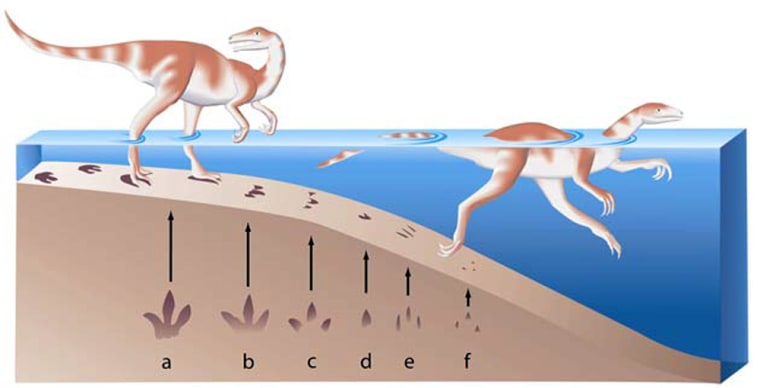Tracks of a previously unknown swimming dinosaur have been found along the shores of an ancient sea in Wyoming, scientists announced Monday.
The tracks reveal an event 165 million years ago when a 6-foot-tall (2-meter-tall), two-legged dinosaur waded into the inland sea and gradually lost touch with the ground.
"It was about the size of an ostrich, and it was a meat-eater," said Debra Mickelson, a University of Colorado at Boulder graduate student. "The tracks suggest it waded along the shoreline and swam offshore, perhaps to feed on fish or carrion."
Mickelson was scheduled to present her team's findings at the Geological Society of America's annual meeting this week in Salt Lake City.
This is the first evidence for a swimming dinosaur in Wyoming, and also the first evidence for any dinosaur in the state during the middle Jurassic period, Mickelson said.
The search is on for bones, and no name has been issued yet.
"It is a dinosaur with birdlike characteristics and is a possible ancestor of birds," Mickelson said. "It lived in a much earlier time period and was very different from larger dinosaurs like T. rex or Allosaurus."
The tracks are embedded in ancient tidal flats of what's dubbed the Sundance Sea, which is thought to have covered Wyoming, Colorado and other parts of the western United States. It might have been warm and relatively shallow, much like the Gulf of Mexico is today, scientists say.
"The swimming dinosaur had four limbs and it walked on its hind legs, which each had three toes," Mickelson said. "The tracks show how it became more buoyant as it waded into deeper water — the full footprints gradually become half-footprints and then only claw marks."
The tracks were found among traces of ancient crocodiles and marine worms.
